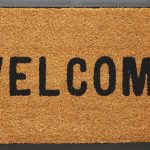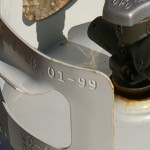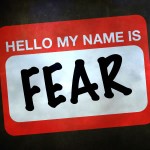Catastrophe Network and The American Preparedness Radio Network (TAPRN) have teamed up to create a Standardized Amateur Radio Prepper Communications Plan. This plan outlines a standard set of frequencies that should be used by all preppers following a catastrophic disaster. These frequencies will serve as a meeting point where information about the event can be shared and actions between like minded preppers can be communicated.
This plan will not and cannot work if it is not widely publicized in the prepper community! All preppers must know and understand these frequencies in order for them to become common meeting points. This is your call to action, if you are a licensed Amateur Radio operator and a prepper, please spread the word about this new communications plan. Tweet about it, blog about it, and most of all…share the document!
Click here to download the latest copy of the Standardized Amateur Radio Prepper Communications Plan.
The following are the frequencies that have been designated by Catastrophe Network and the The American Preparedness Radio Network (TAPRN):
- 80 Meters – 3.818 MHz LSB (TAPRN Net: Sundays at 9 PM ET)
- 40 Meters – 7.242 MHz LSB
- 40 Meters Morse Code / Digital – 7.073 MHz USB
- 20 Meters – 14.242 MHz USB
- 20 Meters Morse Code / Digital – 14.073 MHz USB
- 2 Meters – 146.420 MHz FM
- 440 (70 cm) – 446.420 MHz FM
- FRS/GMRS – Channel 4 (462.6375 MHz)
- CB – Channel 4 (27.005 MHz)
- MURS – Channel 4 (154.570 MHz)
Aside from the TAPRN nets held on 3.818 and their digital net on 7.073, formal prepper nets will not be held on these frequencies. However, future exercises and drills may be held on-air between preppers and preppers are encouraged to use these frequencies to coordinate activities. Along the same lines, during catastrophes, it is unlikely that a formal net control will be established. The Standardized Amateur Radio Prepper Communications Plan outlines protocols for calling and communicating with other preppers.
Amateur Radio Stations using the Standardized Prepper frequencies of 3.818, 7.242, and 14.242 MHz transmit pertinent information in AM (Amplitude Modulation) mode rather than SSB (Single Sideband) mode so that those with less expensive shortwave receivers that do not receive SSB can still gather pertinent prepper information from the Amateur “Ham” Radio community.
Click here to list your GENERAL location on the map of Standardized Prepper Communications Plan users.
View Prepper Communications Map in a larger map
Plan News and Updates
11/01/2011 – The Plan was downloaded by nearly 1000 people within the first 24 hours. Keep up the good work in spreading the word. This plan will only work if we spread the word and everyone prints a copy for their station. Special thanks to @Hamradio_Ticker, @SelfReliantInfo, @PrepperWebsite, @TalkSouthRadio, @iSurvivalSkills, and @SurvivorJane for spreading the word on Twitter.
11/12/2011 – TAPRN has informed me that their Sunday night digital net is now using CONTESTIA 4/250 mode rather than PSK-31. Consequently, the Plan has been updated to reflect this change.
12/31/2011 – I have updated the document, with a minor revision to include a © on the document for prosperity purposes. I still want everyone to distribute the document as widely as possible. However, some people have been using the document without giving any credit to Catastrophe Network and even taking credit for creating the document themselves. I also added the document to Scribd and embeded it below. This will make sharing it even easier!
01/15/2012 – I recently received an email from a fellow Amateur Radio Operator by the name of Bart who pointed out to me that Morse code, also known as CW in the Amateur Radio community, should be included in the plan because it is one of the most basic, yet effective and energy efficient modes in existence. My original intent was to include the TAPRN digital frequency as a general purpose “digital” frequency, which would include Morse code, since it is really a very basic digital mode. However, the specific mention of CONTESTA was made beacuse that is what TAPRN used for their Sunday nets. With that said, I would like to state clearly that any digital mode, including Morse code, could be used 7.073 in accordance with the plan. I have updated the plan to reflect this change.
07/03/2012 – TAPRN participation on the digital frequency of 7.073 MHz has been discontinued. This frequency will continue to be used as the standard prepper morse code / digital frequency. In addition, the Standardized Amateur Radio Communications Plan was recently published in a booked entitled “Survival Communications” by John Parnell. Please patronize his books, as they are a great reference book for communications, customized by state! You can find his website at http://www.tutorturtlepress.com/.
08/12/2012 – Non-Amateur Radio channels have been added to the Standardized Amateur Radio Prepper Communications Plan in order to facilitate prepper communications in the non-ham radio bands. The following additions are being made:
- FRS/GMRS (Family Radio Service/General Mobile Radio Service) Channel 4 (462.6375 MHz) be designated for “prepper” use in local communities.
- CB (Citizens Band) Channel 4 (27.005 MHz) be designated for “prepper” use in local communities
- MURS (Multi-Use Radio Service) Channel 4 (154.570 MHz) be designated for “prepper” use in local communities.
- Amateur Radio Stations using the Standardized Prepper frequencies of 3.818, 7.242, and 14.242 MHz transmit pertinent information in AM (Amplitude Modulation) mode rather than SSB (Single Sideband) mode so that those with less expensive shortwave receivers that do not receive SSB can still gather pertinent prepper information from the Amateur “Ham” Radio community.
09/30/2012 – A 20 meter digital frequency of 14.073 USB and a 70 cm amateur radio frequency of 446.420 FM have been added to the plan. In addition, a map has been added that will allow preppers who plan to use these frequencies to register their general location and their capabilities so that other preppers in the same general area know how to contact each other. Click here to list your location.
Questions or Ideas?
If you have questions or ideas about the Standardized Amateur Radio Prepper Communications Plan or would like to get involved, email me at admin@catastrophenetwork.org
—
Source: http://www.catastrophenetwork.org/?page_id=446








I’m curious why were the chosen frequencies so odd? Since they will be used during a critical time, why aren’t we using simple standardized frequencies like 7.100 for CW, 7.200 for SSB, 14.100 CW, 14.200 SSB, 146.200 FM,3.800 LSB etc. ?
The current freq list is not clean and easily remembered. An effort needs to be made to use a basic frequency format and stick with it across the various bands.